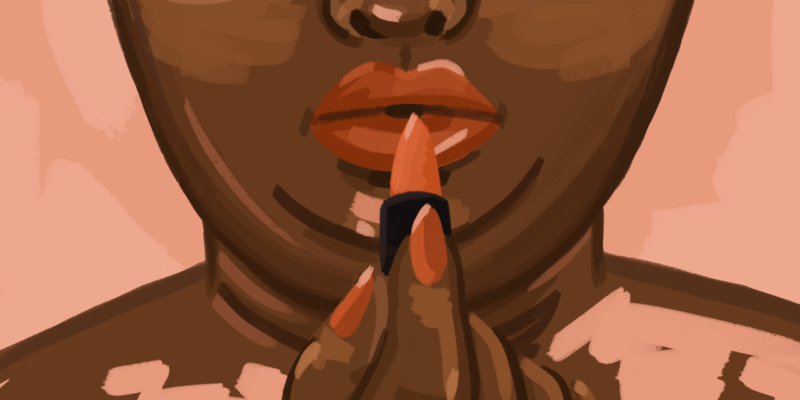
Welcome to the Learning Curve, a monthly column where we unpack the complicated experience of accepting your own body in a world that just doesn’t seem to want you to. This month, in our first-ever installment, staff writer Nicola Dall’Asen ponders the lack of fat people in beauty campaigns — and in the industry at large.
The pull tabs rarely made it all the way to the top of the zipper. The size 13 jeans, the largest in the store, crept so far up my crotch that I could taste denim. T-shirt fabric stretched taut across my belly and the back fat that always hung over waistbands. Thanks to a lack of larger sizes in mainstream girls’ and women’s retailers, this happened almost everywhere I shopped for clothing — but never, ever in the beauty aisles.
I was lucky to have discovered the magical world of beauty products as early as I did, around the age of 10. My size never dictated whether or not I could curl my hair with my coveted Mary-Kate and Ashley curling iron or douse myself in Viva La Juicy (forgive me, it was the early 2000s). I could swatch dozens of eye shadows, free of unflattering dressing-room lighting — and would consistently throughout my life until I became a beauty journalist. When I bought these things in person, I could see other customers around me who had bodies just like mine shopping alongside those who had bigger and smaller ones too. Surrounded by beauty products, I finally felt accepted, hoping that fashion might one day catch up.
This is a familiar tale for many fat people, women especially. “Beauty was a way that I could feel pretty when I didn’t have clothes that I could afford or that would fit me, so I always used makeup as a way of expressing myself,” says Jessica Torres, beauty and fashion content creator and cohost of the Fat Girl Club podcast. “Once I discovered red lipstick, I literally was wearing it all the time. I was like, Wow, this makes me feel sexy and powerful, and I can do what I want.” I’ve heard plenty of similar sentiments from other big babes throughout my life.
With this in mind, consider all the beauty advertisements you’ve seen in your life and combine them into one image. What do you picture? Here’s what I see: A thin, white woman. Her skin is taut, tan, and free of blemishes, stretch marks, and scars. She’s either giving a “smize” or is happily displaying virtually flawless teeth. Of course, there’s nothing wrong with being white and thin, but when you consider the purpose of a beauty advertisement — for a brand to convince you that their product will make you more beautiful — we run into a problem. Because when you’re consistently taught to believe that the only definition of beautiful is white and thin (or proportioned in a very specific way), it can really mess with a person’s self-image if they don’t fit that mold (and many, many people do not fit that mold). Meanwhile, the people who are actually buying those products represent the full range of body sizes and shapes.